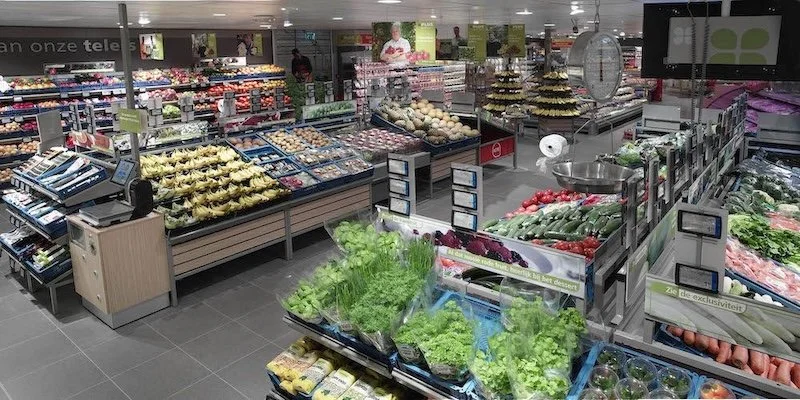Automating logistics processes in e-commerce
As an online retailer, the challenges of managing inventory, coordinating shipments, and meeting customer expectations can be daunting. By incorporating automation into your logistics processes, you can streamline operations, reduce errors, and scale your business efficiently.
With advancements in technology, even small to medium-sized e-commerce businesses can leverage logistics automation tools to stay competitive. Whether you're aiming to cut costs, improve delivery times, or increase operational flexibility, automating logistics is an essential strategy for growth and success.
Order processing automation
Handling orders manually often leads to delays and mistakes that could frustrate your customers. Automated order processing enables you to quickly and accurately manage incoming orders, significantly reducing human error.
Automation also helps you prioritise orders based on predefined criteria, ensuring that urgent or high-value orders are processed first. This not only speeds up delivery for key customers but also optimizes resource allocation to meet demand effectively.
Speed and Efficiency
Automation tools handle repetitive tasks like order data entry and verification instantly, allowing your customers to receive order confirmation much faster. By eliminating bottlenecks, you enhance efficiency and boost customer satisfaction, as orders are swiftly moved to the next stage of fulfillment.
Integration with Inventory Systems
Effective order processing automation integrates seamlessly with your inventory management system and PIM software, which ensures that product details, stock levels, and descriptions are consistent across all platforms, preventing discrepancies and improving overall efficiency.
This synchronisation helps ensure that stock levels are up to date in real time, which prevents problems like overselling and backorders. It also allows you to automatically adjust stock as orders come in, maintaining the balance between supply and demand.
Warehouse management automation
Warehousing is one of the most resource intensive aspects of e-commerce logistics. Automating your warehouse management can lead to significant savings in both time and money, allowing you to focus on growing your business instead of dealing with inefficiencies.
Inventory Tracking and Management
Use technology such as barcodes, RFID tags, and sensors to track inventory accurately. Automated systems help ensure that inventory data is current, reducing the risk of losing products due to misplaced items or data errors. With accurate, real-time information, you have better control over stock, reducing surplus and avoiding shortages.
Automated Picking and Packing
Picking and packing are labour intensive and prone to errors when handled manually - automated picking systems, such as robotic pickers and conveyor belts, make these processes faster and more reliable.
Automation also allows you to optimise the layout of your warehouse for the shortest pick paths, ensuring efficiency and reducing the chances of mistakes.
Shipping and delivery automation
Automated shipping solutions help you provide consistent, timely deliveries, ultimately improving customer satisfaction and retention.
With automated logistics, you also need adequate van insurance coverage for your delivery fleet, ensuring that any unexpected issues are swiftly handled without disrupting the flow of shipments.
Leveraging automation also enables you to easily manage multiple carriers and streamline the decision-making process for each shipment. Additionally, automated shipping systems can help you predict delivery delays and proactively inform customers, enhancing transparency and trust.
Carrier Selection and LABELLING
Automated shipping software allows you to select the best carrier for each order based on factors like cost, delivery time, and destination. This ensures that you are always using the most cost-effective option available, which helps you save money and provide better value to your customers. Automatic generation of shipping labels also saves time, reducing manual work and the risk of data entry errors.
Real-Time Shipment Tracking
Automated tracking updates allow your customers to see exactly where their packages are, from dispatch to delivery. With automated notifications, you can offer peace of mind and enhance the overall customer experience, reducing inquiries about order statuses and freeing up customer support resources.
Returns management automation
Returns are an inevitable part of e-commerce, but managing them manually can be cumbersome and costly. Automation can help you simplify returns management, reducing frustration for both you and your customers.
Return Authorisation and Processing
Automated returns management begins with return merchandise authorisation (RMA). By automating this step,customers can easily initiate returns, receive instructions, and obtain shipping labels. Automating these processes makes it faster for customers to return items and easier for you to handle these requests efficiently.
Inventory Restocking and Refunds
Scanning returned products directly into your inventory system ensures that stock levels are updated promptly, minimising the delay in making these items available for resale. Automated refunds, meanwhile, ensure that your customers receive their money back promptly, maintaining trust in your brand.
Data driven insights and optimisation
Automation allows you to make better decisions and continuously improve your logistics efficiency. Automation also provides insights into customer buying patterns, which can help you adjust inventory levels and reduce wastage.
Additionally, it enables you to track key performance indicators (KPIs) more accurately, making it easier to benchmark and enhance your operational standards.
Performance Metrics and Analysis
Automated systems generate data at every point in the logistics chain, from order processing to shipping.
This data can be analysed to identify bottlenecks, predict future demand, and make informed decisions about staffing, inventory levels, and shipping methods. By understanding your logistics performance in detail, you can take proactive steps to optimize each aspect of the process.
Predictive Analytics
With predictive analytics powered by automation, you can make more accurate forecasts regarding customer demand, inventory turnover, and delivery timelines.
These insights are crucial for preparing for peak sales periods and preventing stockouts. Automated systems equipped with AI can learn from past data, helping you identify trends and predict customer behaviours, so you’re always a step ahead.
Conclusion
By automating key logistics processes, you not only improve operational efficiency but also deliver a smoother, more reliable experience for your customers. Automation allows you to optimise everything from order processing and warehousing to shipping and returns management, empowering your business to scale sustainably.
Embracing logistics automation helps you minimise errors, save time, and ultimately focus more on the areas that matter most to your customers - quality products and exceptional service.































Continue reading…